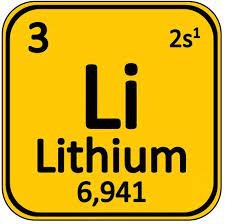Physical properties of lithium. Lithium is a metallic element with the symbol Li and atomic number 3. It is the lightest of all metals and is highly reactive due to its position in the periodic table.
Here are some of the key physical properties of lithium:
- Density: Lithium has a low density of 0.534 grams per cubic centimeter, making it one of the lightest elements.
- Melting and boiling points: Lithium has a low melting point of 180.5 degrees Celsius and a boiling point of 1342 degrees Celsius.
- Appearance: Lithium is a soft, silver-white metal that can be easily cut with a knife.
- Electrical conductivity: Lithium is a good conductor of electricity and is often used in batteries due to its ability to store and release electrical energy.
- Thermal conductivity: Lithium is also a good conductor of heat, making it useful in applications that require efficient heat transfer.
- Ductility: Lithium is a ductile metal, meaning it can be drawn into wires without breaking.
- Reactivity: Lithium is highly reactive and can react violently with water or air. It must be stored in an inert atmosphere to prevent oxidation.
- Isotopes: Lithium has two stable isotopes, lithium-6 and lithium-7, and several radioactive isotopes that are used in nuclear research.
- Magnetic properties: Lithium is paramagnetic, meaning it is weakly attracted to magnetic fields.
In conclusion, lithium is a unique and highly reactive metal with a range of physical properties that make it useful in various applications. Its low density and high electrical and thermal conductivity make it ideal for use in batteries and other energy storage devices, while its ductility and softness make it easy to work with in certain applications. However, its reactivity and potential hazards highlight the importance of handling lithium safely and responsibly.
